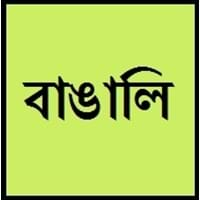Countries
Hong Kong, Macau
Andaman and Nicobar Islands, Bangladesh, India, Sierra Leone
National Language
China, Guangdong
Bangladesh, India
Second Language
Not spoken in any of the countries
India
Speaking Continents
Asia
Asia
Minority Language
Hawaii
Australia, Canada, Italy, Japan, Kuwait, Malaysia, Maldives, Nepal, Oman, Pakistan, Qatar, Saudi Arabia, Singapore, South Africa, South Korea, United Arab Emirates, United Kingdom, United States of America
Regulated By
Civil Service Bureau, Government of Hong Kong, Official Language Division
Bangla Academy, Paschimbanga Bangla Akademi
Interesting Facts
- Cantonese have lot of slangs, many of them include words that do not make sense at all and some also have English in them.
- Even though Cantonese and Mandarin are dialects of Chinese, Cantonese has 8 tones instead of Mandarin's 4.
- Bengali language is the World's sweetest language.
- 21st February is celebrated as an International Mother Language day, which is based on Bengali language.
Similar To
Chinese Language
Assamese and Oriya
Derived From
Not Available
Sanskrit Language
Alphabets in
Cantonese-Alphabets.jpg#200
Bengali-Alphabets.jpg#200
Scripts
Chinese Characters and derivatives
Bengali, Brahmic family and derivatives
Writing Direction
Left-To-Right, Horizontal, Top-To-Bottom
Left-To-Right, Horizontal
Thank You
谢谢
ধন্যবাদ (dhonnobad)
How Are You?
你好吗?
কেমন আছিস? (kêmon achhish?)
Good Night
晚安
শুভরাত্রি (shubhoratri)
Good Evening
晚上好
শুভ সন্ধ্যা। (shubho shondha)
Good Afternoon
下午好
ভাল বৈকাল (Bhāla Baikāla)
Good Morning
早上好
সুপ্রভাত (shuprobhat)
Please
请
অনুগ্রহ করে (Anugraha karē)
Sorry
遗憾
দুঃখিত (dukkhito)
I Love You
我爱你
আমি আপনাকে ভালোবাসি (ami apnake bhalobashi)
Excuse Me
原谅我
মাফ করবেন (Māpha karabēna)
Dialect 1
Guangzhou
Chakma
Where They Speak
outside mainland China
Bangladesh, Burma, India
How Many People Speak
Not Available
Where They Speak
Hong Kong
Bangladesh, India
How Many People Speak
Not Available
Dialect 3
Hong Kong
Rarhi
Where They Speak
Hong Kong
India
Second Language Speakers
Not Available
Native Name
Kwang Tung Wa
বাংলা (baɛṅlā)
Alternative Names
Guangfu, Metropolitan Cantonese
Bangala, Bangla, Bangla-Bhasa
French Name
Not Available
bengali
German Name
Not Available
Bengali
Pronunciation
Not Available
Not available
Ethnicity
Not Available
Bengalis (Bengali people)
Origin
17th century
1000–1200 CE
Language Family
Sino-Tibetan Family
Indo-European Family
Subgroup
Not Available
Indo-Iranian
Branch
Not Available
Indic
Early Forms
No early forms
Abahatta, Old Bengali
Standard Forms
Standard Cantonese
Bengali
Language Position
Not Available
Signed Forms
Not Available
Not Available
Scope
Not Available
Individual
ISO 639 1
No data available
bn
ISO 639 2/T
Not Available
ben
ISO 639 2/B
Not Available
ben
ISO 639 3
No data available
ben
ISO 639 6
Not Available
Not Available
Glottocode
cant1236
beng1280
Linguasphere
No data available
59-AAF-u
Language Type
Not Available
Living
Language Linguistic Typology
Not Available
Not Available
Language Morphological Typology
Not Available
Not Available
All Cantonese and Bengali Dialects
Most languages have dialects where each dialect differ from other dialect with respect to grammar and vocabulary. Here you will get to know all Cantonese and Bengali dialects. Various dialects of Cantonese and Bengali language differ in their pronunciations and words. Dialects of Cantonese are spoken in different Cantonese Speaking Countries whereas Bengali Dialects are spoken in different Bengali speaking countries. Also the number of people speaking Cantonese vs Bengali Dialects varies from few thousands to many millions. Some of the Cantonese dialects include: Guangzhou, Xiguan. Bengali dialects include: Chakma , Hajong. Also learn about dialects in South American Languages and North American Languages.
Cantonese and Bengali Speaking population
Cantonese and Bengali speaking population is one of the factors based on which Cantonese and Bengali languages can be compared. The total count of Cantonese and Bengali Speaking population in percentage is also given. The percentage of people speaking Cantonese language is 16.00 % whereas the percentage of people speaking Bengali language is 3.11 %. When we compare the speaking population of any two languages we get to know which of two languages is more popular. Find more details about how many people speak Cantonese and Bengali on Cantonese vs Bengali where you will get native speakers, speaking population in percentage and native names.
Cantonese and Bengali Language Codes
Cantonese and Bengali language codes are used in those applications where using language names are tedious. Cantonese and Bengali Language Codes include all the international language codes, glottocodes and linguasphere.





